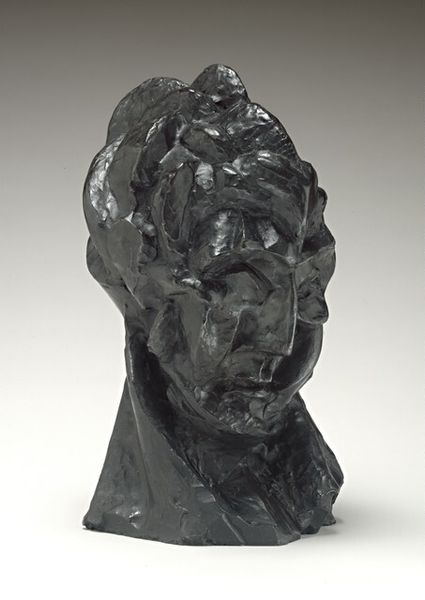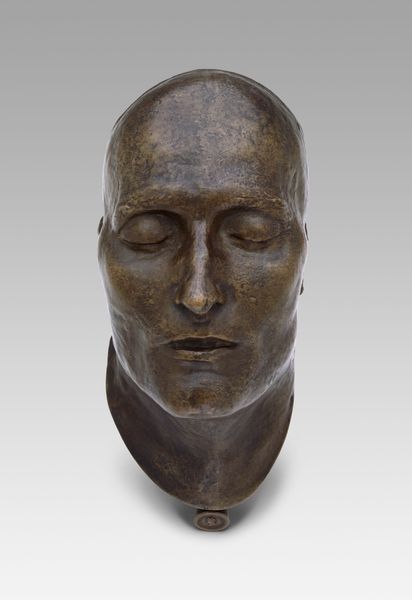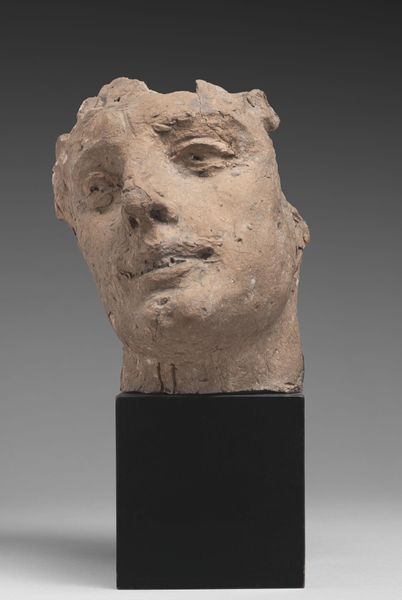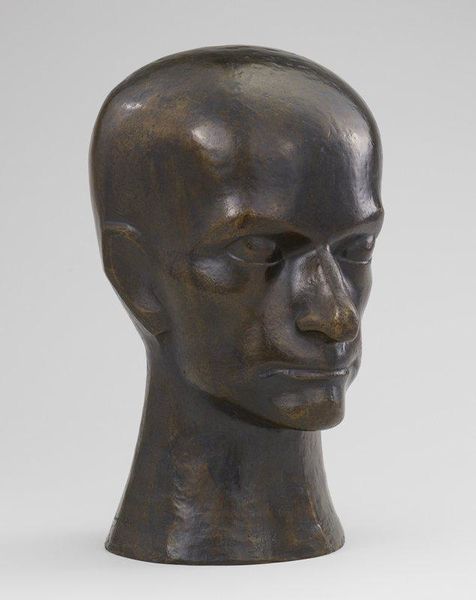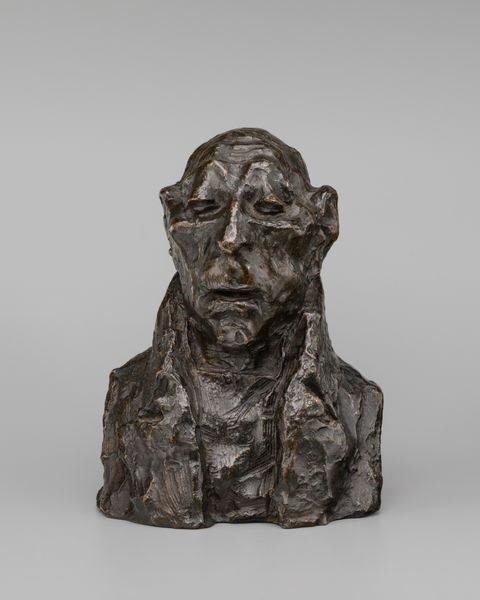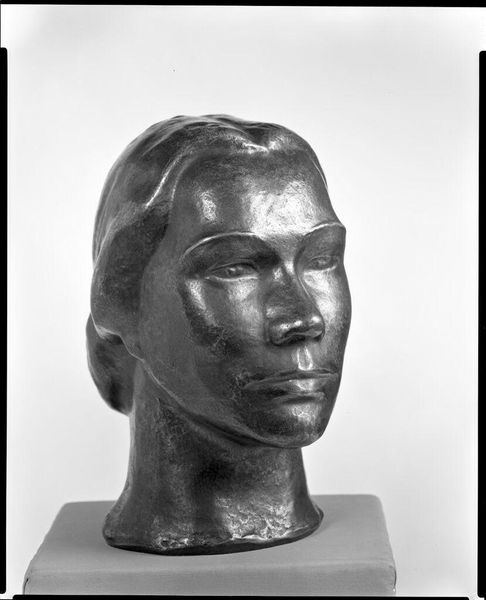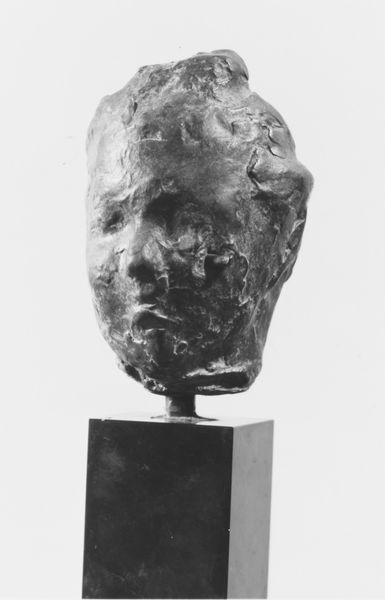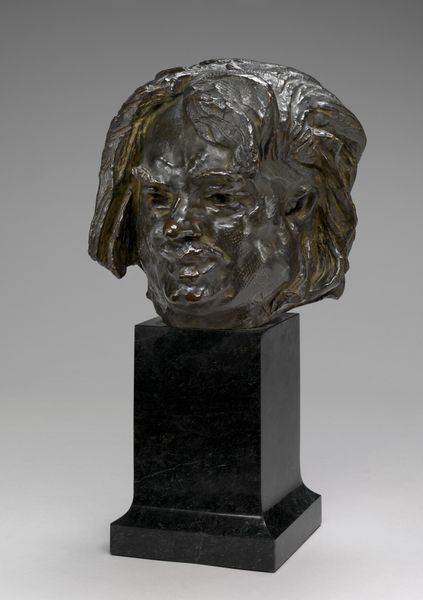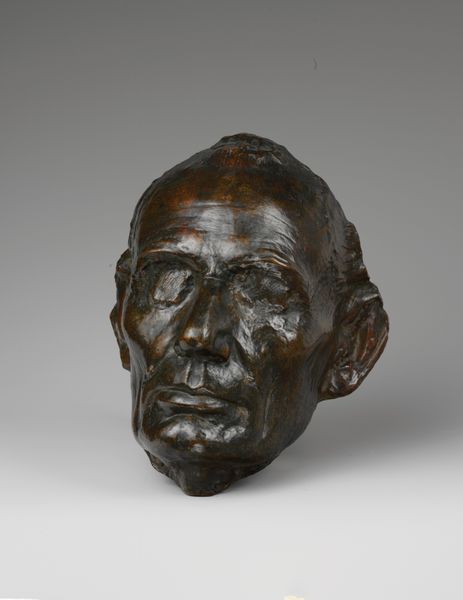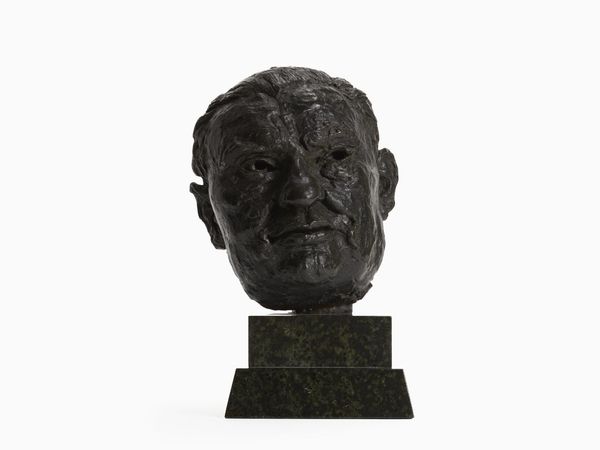
bronze, sculpture
#
portrait
#
bronze
#
sculpture
#
realism
Dimensions: height without base: 20.1 cm (7 15/16 in.) height with base: 31.2 cm (12 5/16 in.) maximum width: 14.2 cm (5 9/16 in.)
Copyright: National Gallery of Art: CC0 1.0
Curator: Here we have Aimé-Jules Dalou’s “Portrait Mask of Etienne Carjat,” created in bronze after 1891. What strikes you most when you first see it? Editor: There’s a striking sense of melancholy. The downturned eyes and slight furrow in his brow give an air of weariness, a soul that has observed much. I feel like I could gaze into his face for a long time, lost in consideration of who this man was. Curator: Etienne Carjat, himself a caricaturist, photographer, and journalist, inhabited a fascinating nexus of Parisian artistic and political circles. Consider what it means for one image-maker to capture another; and late in life too, seemingly stripped bare to his essential self in this way. It reads to me like the distillation of an intellectual peer group more broadly. Editor: Absolutely, that makes a good point about this mask seeming to act as something more. Dalou's choice of bronze further enriches its symbolic meaning. Bronze, from antiquity, conveys a sense of authority, dignity and permanence. The piece seems to signal Carjat as an iconic intellectual figure. The mask presentation in particular draws on powerful, historical connotations— death masks and classical portraiture. Curator: Dalou made the piece late in Carjat's life; a man who circulated amongst cultural elites of 19th-century Paris, which speaks to this mask being suggestive of complex power relations. Carjat notably photographed figures like Baudelaire, Courbet and Victor Hugo. Considering his connections, can this mask be read not only as the portrait of one man but also of a milieu? Editor: Certainly. The mask becomes a symbolic encapsulation of artistic and intellectual circles within Paris during that period. What might otherwise be considered an unassuming likeness now seems to represent not merely a single individual, but an entire community. One wonders too, did Carjat influence his own representation, shaping a specific symbolic visual? Curator: That is very plausible. He was no stranger to carefully crafting images. He and Nadar are notable examples of artists thinking critically about representation. There are layered intersections of friendship, artistry, and societal context imbued into the sculpture, speaking volumes about artistic representation at that moment. Editor: Absolutely, by giving the artwork this further consideration, the bronze's melancholy, as you point out, seems tied not just to aging, but an entire era. Curator: Indeed. It's been so enlightening to unpack the nuanced connections within and around the "Portrait Mask of Etienne Carjat." Editor: Likewise. Considering these visual signifiers really deepens my sense of connection to both Carjat as an individual and the vibrant society that formed him.
Comments
No comments
Be the first to comment and join the conversation on the ultimate creative platform.
